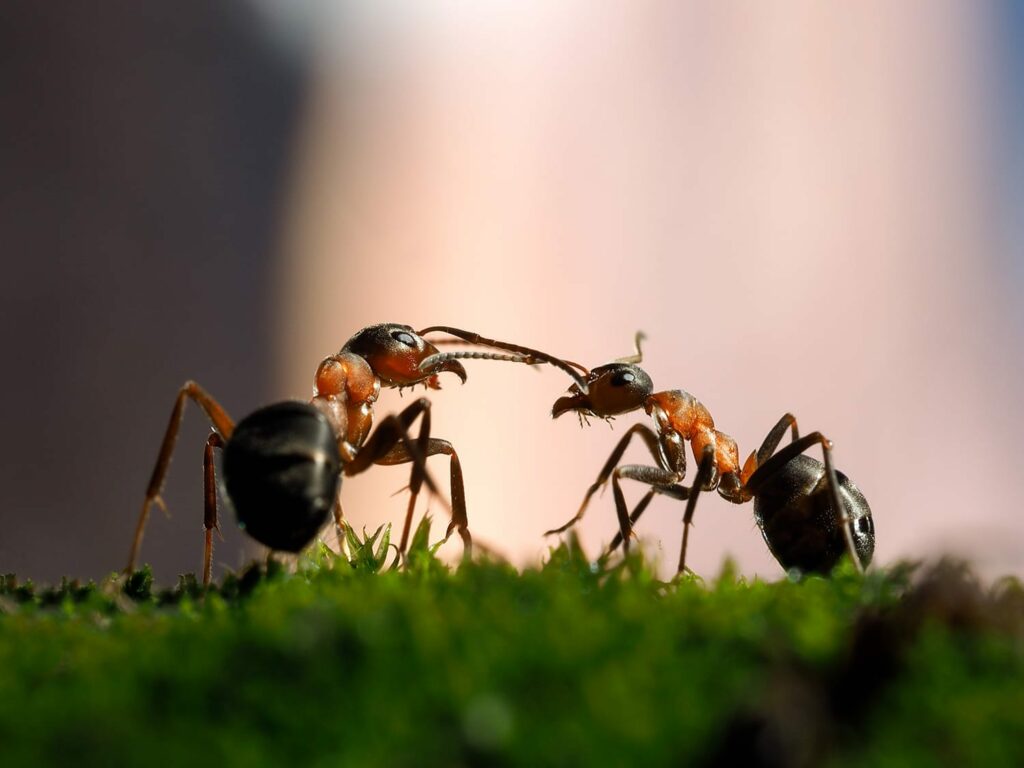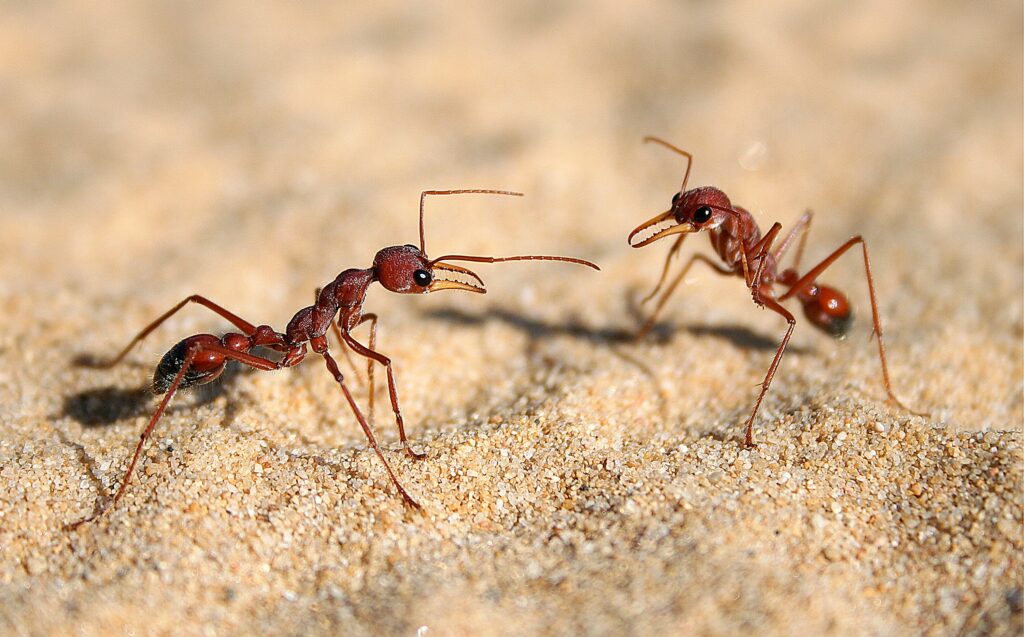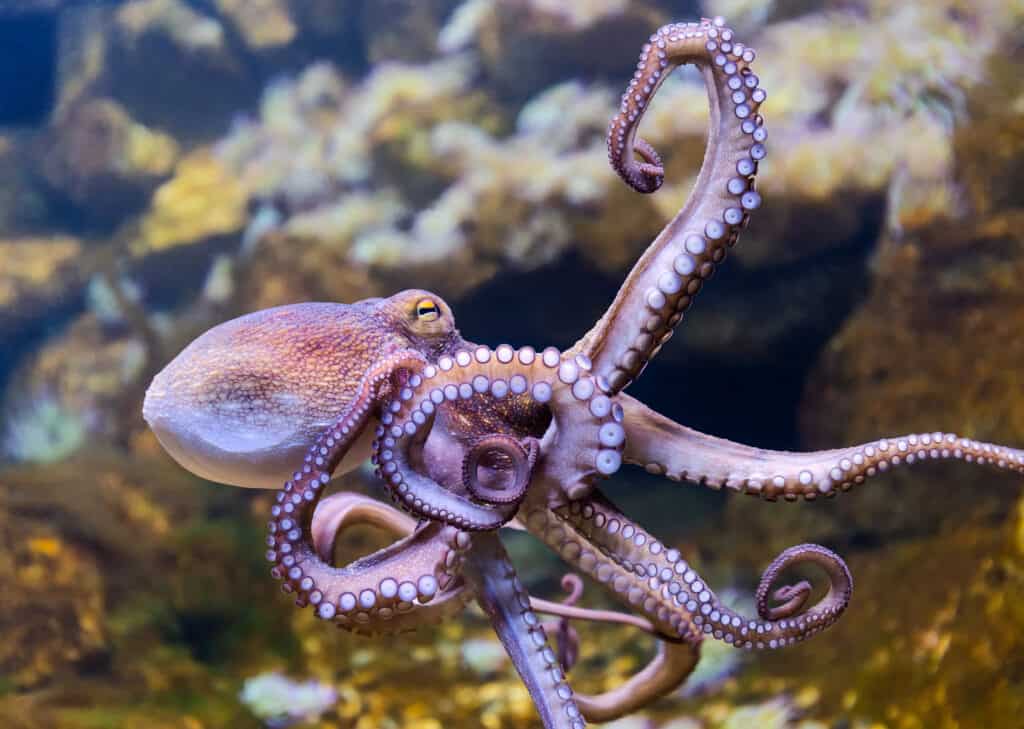How do ants communicate?

The intricate methods of ant communication involve an array of chemical, tactile, and behavioral signals that enable these tiny yet highly organized insects to work collectively as a cohesive unit.
Communication plays a pivotal role in their ability to carry out tasks, defend their nests, locate food, and coordinate various activities.
Chemical Signaling: Pheromones – The Language of Ants
Pheromones are the primary mode of communication among ants, serving as a crucial and pervasive means of conveying information within the colony. These chemical signals, secreted by specialized glands in various parts of an ant’s body, play a central role in coordinating the complex activities of the colony.
Trail Pheromones for Foraging
One of the most well-known uses of pheromones in ant communication is the trail pheromone. Foraging ants release trail pheromones as they return to the nest from a food source. These chemicals create scent trails that guide other worker ants to the discovered food. The strength and concentration of the pheromone trail can signify the quality and quantity of the food source, allowing efficient recruitment of other foragers to gather resources.
Alarm Pheromones for Defense
In times of danger or disturbance, ants release alarm pheromones to signal a threat to the colony. These pheromones alert other ants, triggering a rapid response in defense. The scent can evoke aggressive behavior, recruit more defenders, or initiate escape strategies, enabling the colony to react swiftly to potential dangers.
Identification and Social Bonding
Pheromones also serve in identifying nestmates and establishing social bonds within the colony. Each ant species has its unique pheromonal signature, allowing individuals to recognize members of their own colony and distinguish them from intruders or ants from rival colonies.
Nestmate Recognition and Colony Integrity
Ants regularly exchange pheromones during social interactions, such as grooming or trophallaxis (the exchange of food among colony members). These interactions reinforce the pheromonal profile of the colony and contribute to nestmate recognition, playing a vital role in maintaining colony cohesion and integrity.
Reproductive Signaling
In certain ant species, pheromones also function in reproductive signaling. For instance, queen pheromones maintain the hierarchical structure of the colony, controlling worker behavior and regulating the reproductive potential of other females within the colony.

Tactile Communication
Ants, in addition to their use of chemical signals, engage in a fascinating form of communication through physical interactions, specifically tactile communication. This intricate method of conveying information involves various touch-based interactions that allow ants to exchange essential messages, recognize nestmates, and convey social cues within the colony.
Antennation: The Antennae Connection
Ants possess specialized sensory organs in their antennae, which play a crucial role in communication. Through a process known as antennation, ants engage in gentle contact or rubbing of their antennae with those of other colony members. This interaction is a primary means by which ants exchange chemical and tactile information.
Identifying Nestmates and Social Status
Antennation enables ants to recognize and identify nestmates within their colony. This touch-based interaction allows them to detect specific chemical cues, such as colony-specific hydrocarbons, which help in distinguishing individuals from foreign ants or intruders. It aids in maintaining the social cohesion of the colony and ensures that only recognized members are allowed within the nest.
Conveying Information
During antennation, ants exchange information beyond mere recognition. The tactile interaction through their antennae potentially communicates various messages related to their status, role, or recent experiences. For instance, a foraging ant returning to the nest might share information about a discovered food source through antennation, influencing the behavior of other ants within the colony.
Social Grooming
Tactile communication among ants extends to social grooming, a behavior in which ants clean each other’s bodies through mutual touch. This grooming serves not only hygienic purposes but also reinforces social bonds and communication. Through this intimate physical contact, ants maintain their chemical profile, potentially exchange chemical cues, and reinforce social cohesion within the colony.
Behavioral Significance
The tactile communication through antennation and grooming is integral to the maintenance of social order within the ant colony. The exchange of chemical and tactile cues contributes to the collective identity and harmony of the colony, ensuring efficient functioning, task allocation, and successful coordination of various activities.
Vibrations and Sound in Ant Communication
While the primary modes of ant communication involve chemical and tactile signals, certain species of ants have been observed to employ vibrations and sounds as additional forms of communication. Although less understood compared to chemical signaling, these acoustic signals are believed to convey information within the colony and potentially serve various purposes.
Stridulation and Sonic Communication
Some ant species, such as the leafcutter ants (Atta and Acromyrmex), engage in a behavior known as stridulation. This involves rubbing parts of their bodies together to create sounds or vibrations. In leafcutter ants, these sounds are believed to function as communication signals. The queen ants and the workers produce distinct stridulation sounds, and these vibrations might serve as signals to regulate certain behaviors or communicate specific information within the colony.
Potential Functions of Sound Communication
The purpose of ant acoustic communication remains an area of ongoing research. Scientists speculate that these sounds might convey various messages, including signaling alarm in response to threats, coordinating group activities during foraging, or aiding in mate recognition and mating behaviors. However, further studies are needed to decipher the precise meanings and functions of these acoustic signals in different ant species.
Studies and Scientific Observations
Scientific studies have shed light on the communication methods of ants. Researchers such as Bert Hölldobler and E.O. Wilson, authors of “The Ants“, have extensively studied ant behavior, revealing the complexity of their communication systems. Their work illuminated the role of pheromones in guiding ant behavior and the intricate ways in which these chemical signals are used for foraging, nest maintenance, and social organization within the colony.
Communication in Ant Societies
Carpenter ants ‘throw up’ on each other to say hello










